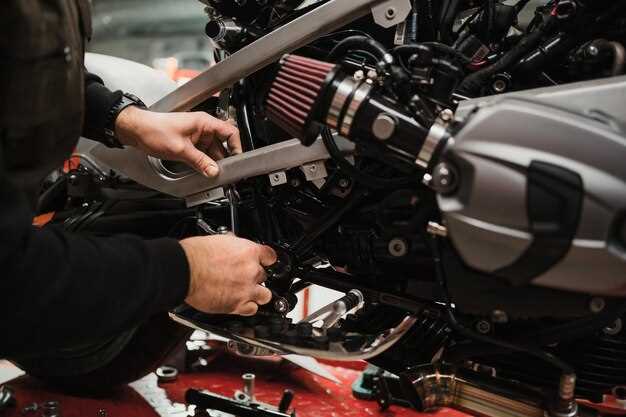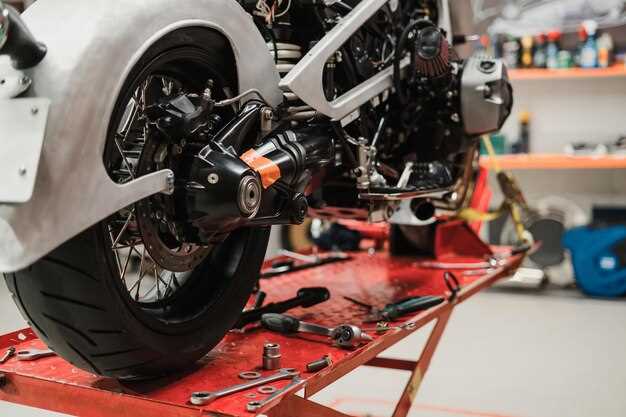

Replacing a motorcycle battery may seem daunting, but it is a straightforward task that can save you time and money. A well-functioning battery is crucial for the overall performance of your motorcycle, ensuring that it starts reliably and powers all electrical components. In this guide, we will walk you through the process of replacing your motorcycle battery step by step, providing you with the confidence to tackle this essential maintenance task.
Before diving into the replacement process, it’s vital to understand the types of batteries available for motorcycles, including lead-acid, AGM (Absorbent Glass Mat), and lithium-ion. Each type has its pros and cons, and choosing the right battery for your motorcycle model is essential to ensuring optimal performance. We will outline the necessary tools and safety precautions you should take before starting the replacement.
In the following sections, you will find a detailed, sequential guide to removing your old battery and installing a new one. By the end of this article, you will be equipped with the knowledge to perform this task efficiently, leading to a smoother ride and enhancing the longevity of your motorcycle.
Choosing the Right Replacement Battery for Your Motorcycle

Selecting the appropriate replacement battery for your motorcycle is crucial to ensure optimal performance and longevity. Start by consulting your owner’s manual, which typically lists the specific type and specifications of the battery required for your model. This information includes the battery size, capacity (measured in amp-hours), and terminal configuration.
One of the primary factors to consider is the type of battery. The most common options are lead-acid and maintenance-free sealed batteries, such as AGM (Absorbent Glass Mat) and gel batteries. Lead-acid batteries are generally less expensive but require regular maintenance, while AGM and gel batteries are more durable, have a longer lifespan, and are often better suited for modern motorcycles.
Next, pay attention to the Cold Cranking Amps (CCA) rating, especially if you live in colder climates. The CCA indicates how well the battery can start your motorcycle in low temperatures. Choose a battery with a CCA rating that meets or exceeds the manufacturer’s recommendation for your bike.
Another consideration is the physical dimensions of the battery. Ensure that the replacement battery fits properly within the designated compartment, avoiding any potential issues with installation or battery movement while riding. Check the terminal layout as well; incorrect positioning can lead to difficulty during installation and potential electrical issues.
Lastly, consider the brand reputation and warranty offered with the battery. Investing in a well-known brand can provide peace of mind regarding quality and performance. A warranty can serve as a safeguard against premature failure, ensuring that you receive a reliable product.
Steps to Safely Remove the Old Battery
Before beginning the process of removing the old motorcycle battery, ensure that you have all necessary tools on hand, such as a screwdriver and a wrench. Additionally, wear protective gloves and eyewear to safeguard against any potential hazards.
Start by turning off the motorcycle and removing the key from the ignition to prevent accidental start-up. It’s essential to let the motorcycle cool down if it has been running recently. Allowing it to settle minimizes the risk of burns or shock.
Locate the battery compartment, which is typically found under the seat or a side panel. Use your screwdriver or wrench to remove any covers or fasteners securing the battery in place.
Once the battery is exposed, identify the negative (-) and positive (+) terminals. Always begin by disconnecting the negative terminal first. This step is crucial as it reduces the risk of a short circuit. Use the wrench to loosen the nut on the negative terminal and carefully lift the terminal off the battery post. Ensure it does not touch any metal parts while you work.
Next, proceed to the positive terminal. Again, use the wrench to loosen the nut and disconnect the positive terminal. Make sure that both terminals are safely positioned away from the battery to avoid accidental contact.
If there are any hold-down brackets or straps securing the battery, detach them at this point. Look for additional fasteners that might be holding the battery in place. Remove these carefully to free the battery.
Finally, with both terminals disconnected and the battery free from any restraints, gently lift the battery out of the compartment. Be cautious, as motorcycle batteries can be heavy. If the battery is corroded or leaking, handle it with extra care. Place the old battery in a suitable container for recycling or disposal.
Installing the New Battery and Ensuring Proper Connections

After selecting the appropriate replacement battery for your motorcycle, the next step involves careful installation and secure connection of the new battery. Follow these detailed steps to ensure a successful installation.
-
Position the New Battery. Place the new battery in the designated compartment of your motorcycle. Ensure that it is oriented correctly, with terminals properly aligned. The positive (+) terminal should be positioned towards the positive cable and the negative (-) terminal towards the negative cable.
-
Connect the Positive Terminal First. Attach the red positive cable to the positive terminal of the new battery. Here’s how to do it:
- Remove any protective cover from the battery terminal, if applicable.
- Align the cable connector with the terminal and press it down securely.
- Use a wrench to tighten the bolt on the connector, ensuring it is snug but not overly tight to avoid damaging the terminal.
-
Connect the Negative Terminal. Next, attach the black negative cable to the negative terminal of the battery:
- Again, remove any protective cover if present.
- Align the negative cable connector with the terminal and press it down firmly.
- Tighten the bolt securely using a wrench, ensuring a good connection.
-
Check Cable Condition. Inspect both cables for any signs of corrosion or damage. Replace any worn cables to prevent future issues.
-
Secure the Battery in Place. Most motorcycle batteries are secured with a strap or a bracket:
- Ensure the battery is firmly seated in its compartment.
- Fasten the strap or bracket to prevent movement during rides.
-
Double-Check Connections. Before closing the battery compartment, verify that both the positive and negative connections are tight and correctly positioned.
-
Test the Battery. Turn on your motorcycle to check if everything is functioning correctly. Listen for the starter engaging, and ensure all electrical systems are operational.
By following these steps, you will ensure that your new motorcycle battery is installed correctly, promoting optimal performance and reliability on the road.






